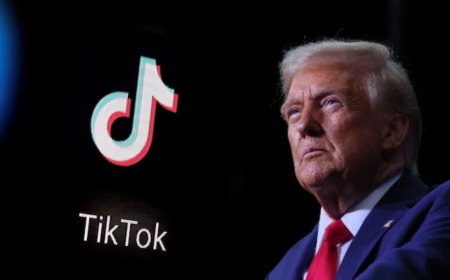Trump's Intel Boost: Funded by Existing Grants

In a move that has sparked considerable dialogue within the tech and financial communities, Intel recently announced what it refers to as an “$8.9 billion investment in Intel common stock.” This statement, while seemingly significant, raises questions about the actual nature of the investment and the role of government funding in the equation. Upon closer examination, it appears that the administration may not be introducing new capital into the mix but rather leveraging existing resources to fortify the semiconductor giant's position in the market.
The semiconductor industry has been under immense pressure in recent years, influenced by global supply chain disruptions, escalating demand for chip technology, and geopolitical tensions that have left many nations scrambling to secure their semiconductor supply chains. In this context, Intel's announcement is more than just a financial maneuver; it is part of a broader strategy to navigate a landscape that has become increasingly competitive and fraught with uncertainty.
Despite the fanfare surrounding the announced investment, it is crucial to dissect the underlying implications. While Intel frames the government’s move as a substantial investment, experts suggest that this may not necessarily translate into new funding. Instead, it could be interpreted as a strategic reallocation of existing government assets aimed at bolstering Intel's market position without infusing additional taxpayer dollars.
This distinction is important, especially as the Biden administration has been vocal about its commitment to revitalizing American manufacturing and securing supply chains for critical technologies, including semiconductors. The CHIPS Act, for instance, has laid the groundwork for significant investments in semiconductor manufacturing and research in the U.S., but the actual mechanics of how funds are utilized can be complex and nuanced.
Intel's position as a key player in the semiconductor industry cannot be understated. With a history dating back to the creation of the microprocessor, the company has been at the forefront of technological innovation for decades. However, in recent years, it has faced stiff competition from rivals like AMD and NVIDIA, who have made significant advancements in chip performance and efficiency. This competitive pressure has prompted Intel to rethink its strategies and bolster its capital reserves to maintain its edge.
Moreover, the global semiconductor shortage highlighted the vulnerabilities in the supply chain, prompting governments around the world to take action. The U.S. government’s interest in supporting domestic semiconductor manufacturing comes amidst a broader push to reduce reliance on foreign suppliers, particularly in light of rising tensions with countries like China. As a result, investments in companies like Intel are seen as vital to ensuring national security and technological leadership.
However, the announcement of the investment itself raises eyebrows. If the government is not committing new funds, what does this mean for the future of public-private partnerships in the tech sector? Will this set a precedent for how similar investments are structured moving forward? These questions remain unanswered as Intel and the administration navigate the delicate balance between public interests and corporate growth.
For Intel, the potential benefits of this investment are clear. Enhanced capital can facilitate research and development initiatives, accelerate production capabilities, and ultimately drive innovation. In an industry where the pace of change is relentless, having robust financial backing can mean the difference between leading the pack and playing catch-up. Furthermore, Intel is poised to leverage government support to strengthen its manufacturing capabilities within U.S. borders, aligning with the national agenda of technological self-sufficiency.
Additionally, this investment announcement could serve as a rallying point for other tech companies and sectors that are looking for similar support from the government. It may pave the way for a new framework of collaboration between private corporations and public entities, one that is built on mutual goals of innovation, security, and economic growth. As the world becomes increasingly digital and reliant on technology, effective partnerships will be essential for navigating the challenges ahead.
Yet, as with any significant corporate announcement, skepticism is warranted. Investors and analysts alike will be closely monitoring the actual impact of this so-called investment. Will it translate into tangible benefits for Intel, or will it simply serve as a public relations strategy to bolster confidence amid fierce competition? The tech industry is notorious for its volatility, and the stakes are high.
Furthermore, the implications of this investment extend beyond Intel. It reflects a growing recognition among policymakers of the strategic importance of the semiconductor sector. As countries race to enhance their technological capabilities, the U.S. must ensure that it remains a leader in innovation. This investment could be just one piece of a larger puzzle aimed at fortifying the nation’s position in the global tech landscape.
In conclusion, while Intel’s announcement of an “$8.9 billion investment” may appear monumental at first glance, a deeper analysis reveals more complexities at play. The distinction between new government funding and the strategic deployment of existing resources is critical to understanding the broader implications for both Intel and the semiconductor industry as a whole. As the landscape continues to evolve, all eyes will be on Intel to see how it capitalizes on this opportunity, and whether this investment will indeed catalyze the innovation and growth that the industry so desperately needs.
What's Your Reaction?
 Like
0
Like
0
 Dislike
0
Dislike
0
 Love
0
Love
0
 Funny
0
Funny
0
 Angry
0
Angry
0
 Sad
0
Sad
0
 Wow
0
Wow
0































